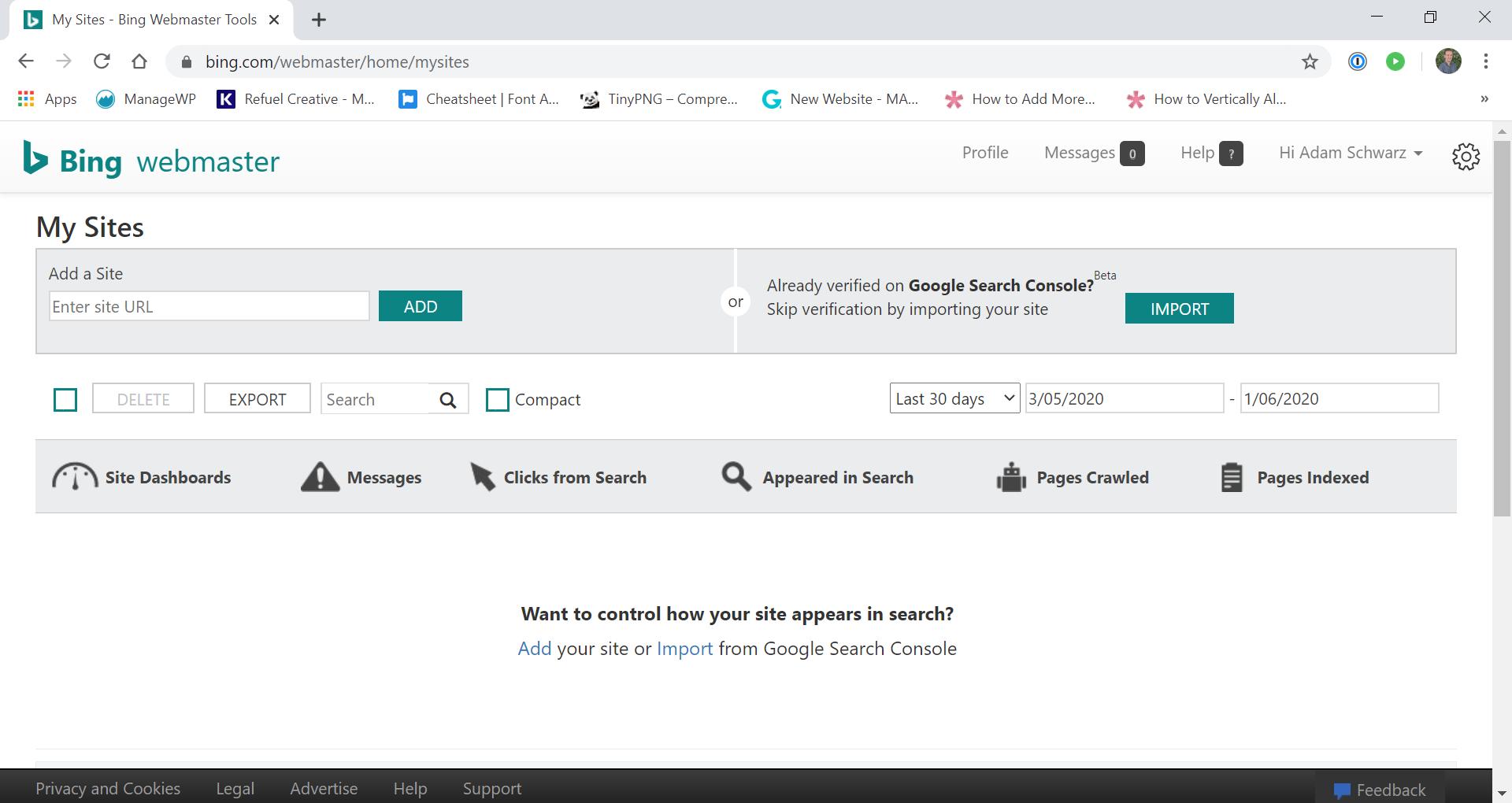Submitting your website to search engines to improve SEO

Last updated: 03 March 2021
Not sure why you'd submit your website to search engines? Who does it or how? These are all good questions and questions we’re going to be answering right here. These simple steps can provide a significant improvement in your search engine optimisation.
So let’s get into it, starting with...
Why do we need to submit our website to these search engines?
Simply put, if a search engine doesn’t know your website exists, it’s not going to serve it up to people when they search for it. Which means ranking for your keywords isn’t just unlikely, it’s downright impossible.
Now, submitting your website to these search engines might not be 100% necessary. Originally they weren’t built to rely on manual submissions, that’s why they crawl the web in search of new websites.
Crawling the web is when a search engine looks for links it hasn't seen before and follows them. If the new link leads to something new and useful, that page is added to the search engine’s index.
This video by Matt Cutts goes more in depth into how all this works.
Which search engines should I focus on?
The biggest search engines in Australia right now, and the one’s we’re focusing on, are:
To no one’s surprise, Google is the giant of the search engine world in Australia and many other countries around the world. It currently commands 94% of the market in Australia, and it’s no surprise considering Google has pioneered much of the industry since its inception in 1997 (hey that’s the same age as me).
Bing
Bing was officially launched in 2009, but has been around longer than that under different names like MSN Search and Live Search. As of 2019, Bing is used by 3.5% of the market in Australia. While this number pales in comparison to Google, it’s still enough to take 2nd place.
What about the other, alternative search engines?
This is by no means a comprehensive list of web search engines. There are other options like DuckDuckGo and Yahoo that are still popular in Australia. But of these, DuckDuckGo searches make use of Google’s Web Index, while Yahoo is powered by Bing and has been since 2009.
Some other search engines that are worth mentioning, but that won’t be the focus of this blog, are Yandex and Baidu.
Yandex is a Russian search engine that doesn’t have a big presence in Australia, but it is one to consider if you’re running an export company or simply want to have a bigger international presence.
Find out how to submit your site to Yandex here.
Same goes for Baidu, which is the single most popular search engine in China, handling billions of searches each month.
If you want to find out how to submit your site to Baidu, Yoast SEO has a nice walkthrough available here.
If they’re so good at finding websites on their own, why bother to manually submit sites?
 There are a few key reasons it’s still a good idea to submit your website manually, rather than relying on search engines to find it themselves.
There are a few key reasons it’s still a good idea to submit your website manually, rather than relying on search engines to find it themselves.
Search engines are smart, but not that smart.
They can’t figure out everything about your site just by crawling it. You know more about your website than Google does, you know which pages are more important, you know what pages contain what information. And when you submit your website, you have a chance to tell the search engine all about it.
It’s better to be safe than sorry
Especially when being sorry in this case means that no one knows your website exists. The search engine’s will probably find your website, and they’ll probably be able to figure out the details. But why risk it? Especially when submitting your website takes only a few minutes to do.
Having said all that, getting your website indexed by search engines alone isn’t enough to pull in traffic. Most people never click beyond the first page of search results, so ensuring your website makes it to that front page is of paramount importance. This process is known as Search Engine Optimisation, or SEO. For some quick and easy ways to boost your SEO check out our Quick Wins to Improve Your SEO blog.
Alright, alright. Submitting my website is important, so how do I actually do it?
Thankfully it’s actually pretty simple to submit your site. Below we’ll break it down by individual search engines, highlighting any differences or quirks to their particular way of doing things.
Sitemaps, what are they and how do I get one?
No matter what search engine you’re submitting your site to, if it’s a brand new site you’re going to need a sitemap. Specifically an XML (Extensible Markup Language) sitemap.
Depending on your CMS, they may already have a sitemap ready for you to grab. Our good friends Hubspot do this, and have this handy guide on how to access your HubSpot sitemap.
Other CMS, like WordPress, don’t have this feature built in, so you have to do it manually. Don’t worry, it’s still quite simple - just follow these steps and you’ll be golden:
- Navigate to your website, in my case I’m going to demonstrate by using our website.
- Now, add /sitemap.xml to your URL. So you’ll end up with www.yourdomain.com.au/sitemap.xml

- You should see a page that looks something like this:

- If you don’t see this, that’s fine. Just go to www.yourdomain.com.au/robots.txt instead and you’ll see this:

- This page will tell you what your sitemap url is if it’s something different to usual.
- There is no step 4! All we need is the URL of the sitemap.
If you’ve looked around at other guides, you might have come across mentions of Google’s URL submission tool. Unfortunately, Google discontinued this tool in July 2018. As of June 2020, the only way to submit your site to Google is to submit a sitemap to the Google Search Console.

Now once you’re in the Search Console, you need to select your property (either domain or url prefix), go to Sitemaps, and then paste in the URL of your sitemap. All that’s left to do is hit “submit” and you’re done.
It’s worth mentioning, at this point, that this process assumes you’ve added and verified your site in the Search Console. If not, then no worries. Google has a great guide on how to do this.
Bing
Similarly to Google, once upon a time Bing had a URL submission tool that you may see referenced in older guides. And, just like Google, this tool was decommissioned in September 2018. To submit your site to Bing, you’ll have to use the Bing Webmaster Tools.
Once you’ve signed in, you’ll see this screen:

From here it’s a simple process of adding your site at the top, filling in the form, and hitting “submit”. All done.
Yahoo and DuckDuckGo
I’ve grouped these two together for a very specific reason: You don’t need to submit your site to either of these!
Yahoo utilises Bing’s index, so once you’ve submitted your site to Bing, it’ll soon appear on Yahoo.
DuckDuckGo makes use of both Google’s index, and Bing’s index. So if you’ve submitted your site to one or both of those, soon enough your site will be on DuckDuckGo as well.
We’re done! Nice work
If you’ve followed everything in this guide, you should have now successfully submitted your website to both Google and Bing, which will also cause it to be indexed by Yahoo and DuckDuckGo.
Don’t forget that just because these search engines know about your website, it doesn’t guarantee that your site will show up on the first page of search results. To do that, you need to look into improving your Search Engine Optimisation.
If you'd like support with your SEO or anything website related, book a call with us!







